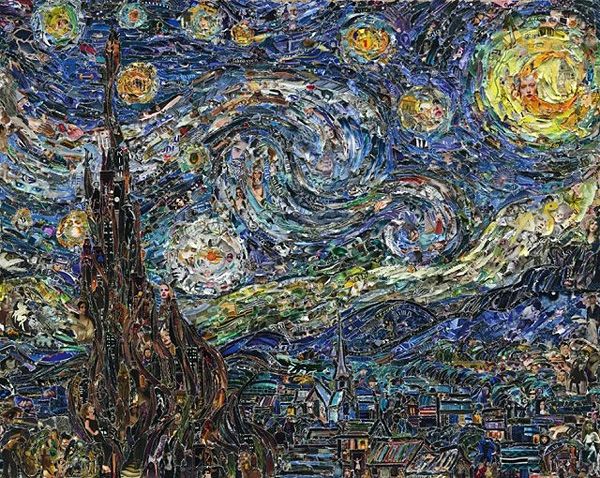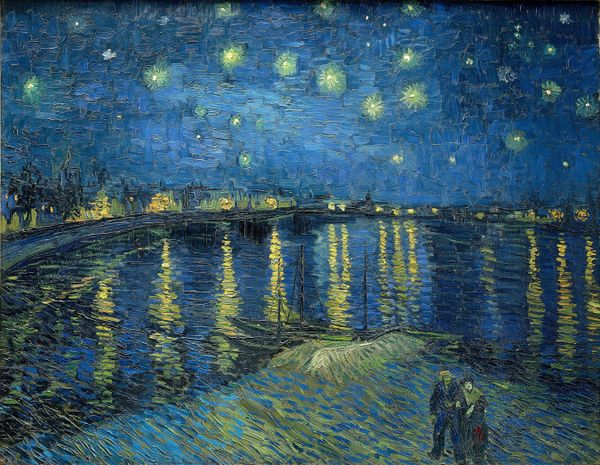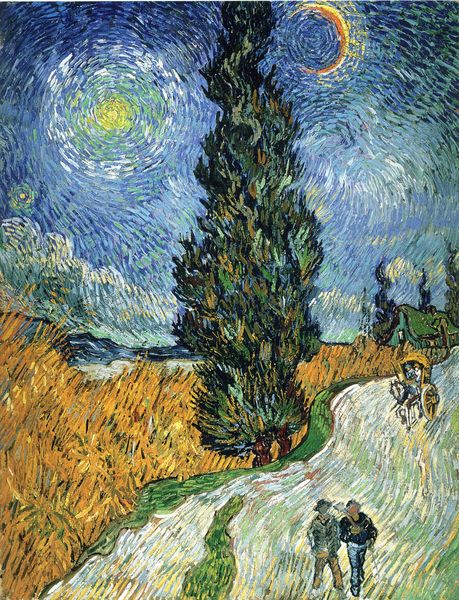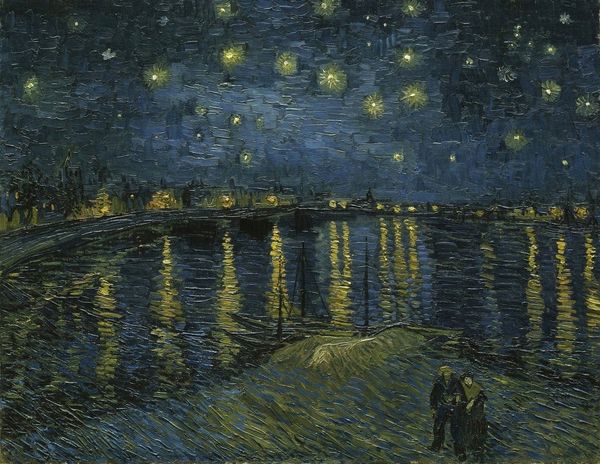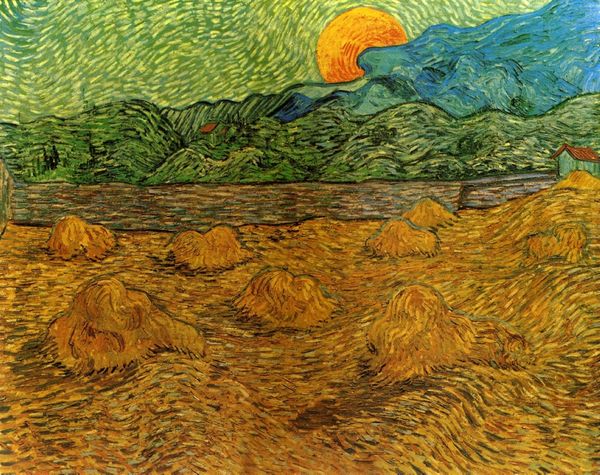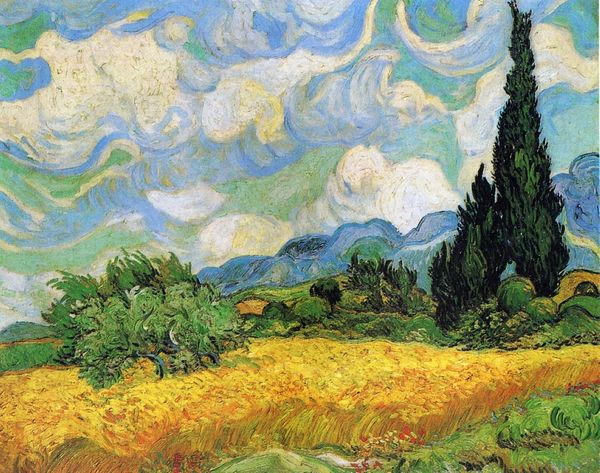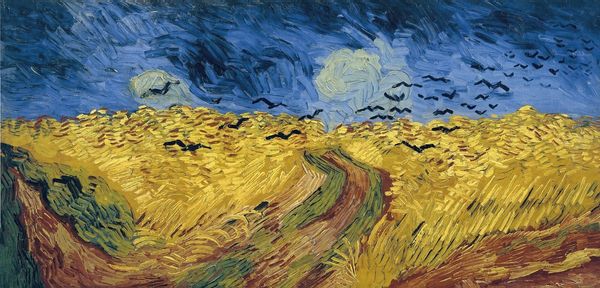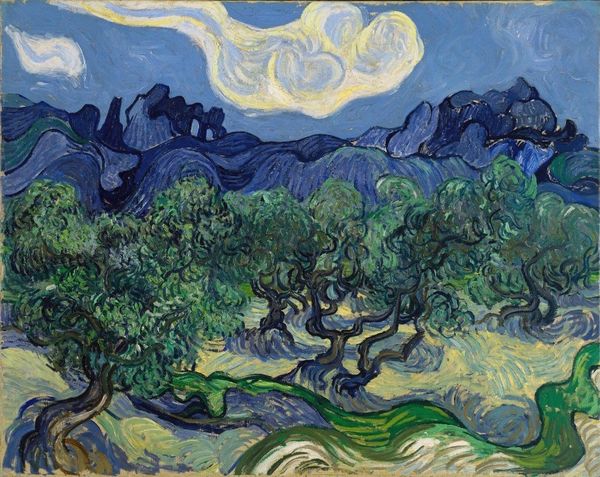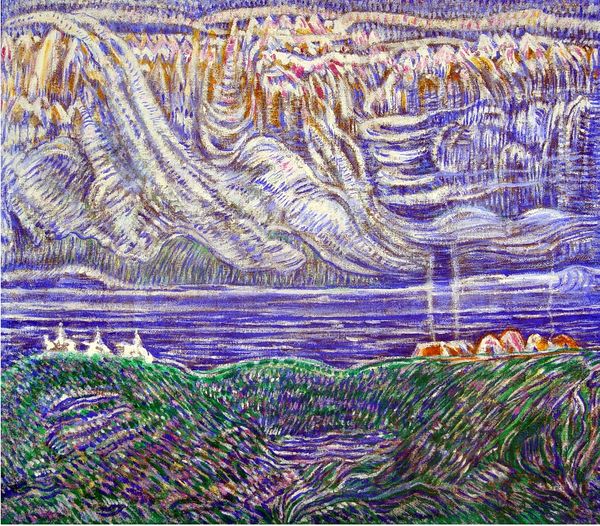
Dimensions: 73.7 x 92.1 cm
Copyright: Public domain
Instantly recognisable and broadly considered a masterpiece of the history of art, The Starry Night was painted by Vincent van Gogh (1853-1890) during his stay in the asylum at Saint-Rémy, southern France. The biographical events which culminated in Van Gogh’s admission to the asylum are well-known: in a breakdown of December 1888, the artist had removed his left ear with a razor. His bandaged ear can be seen in a famous self portrait of early 1889. Van Gogh produced around 150 works during his stay in the Saint-Rémy mental institution, all united by their swirling impasto brush strokes and vibrant sense of movement. Although identifiable as a depiction of the view from Van Gogh’s bedroom window, The Starry Night combines accurate study of the landscape with an abstract imagination. The sky, complete with a luminous crescent moon and the planet Venus amidst an abundance of stars, is stylised in the artist’s signature swirling technique. The black silhouette of a twisted Cyprus tree extends from the foreground, while an invented village nestles beneath the hills of the background. The colour palette consists of a range of deep and vivid blues, juxtaposed with glowing yellow and dashes of radiant white. These intense shades of oil paint have been applied with an expressive energy that is suggestive of movement, acting to indicate the changing view of the sky as the night develops. Nature and natural landscapes feature prominently in Van Gogh’s oeuvre. He wrote in 1874, ‘Always continue walking a lot and loving nature, for that’s the real way to understand art better and better. Painters understand nature and love it, and teach us to see.’ Alongside his symbolic images and bold colours, this personal emotional connection to his painterly subjects fits Van Gogh into the expressive essence of Post-Impressionism. The intriguing symbolism and striking visual appeal of The Starry Night, as well as Van Gogh’s own emotive biography, might explain the enduring popularity of the painting. What does it say to you? Why do you think we love it so much? Editor: Lucy Jude Grantham
